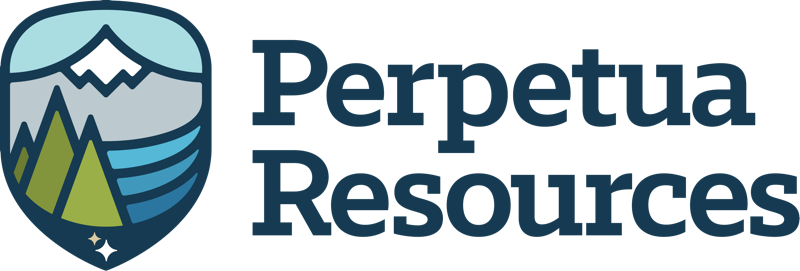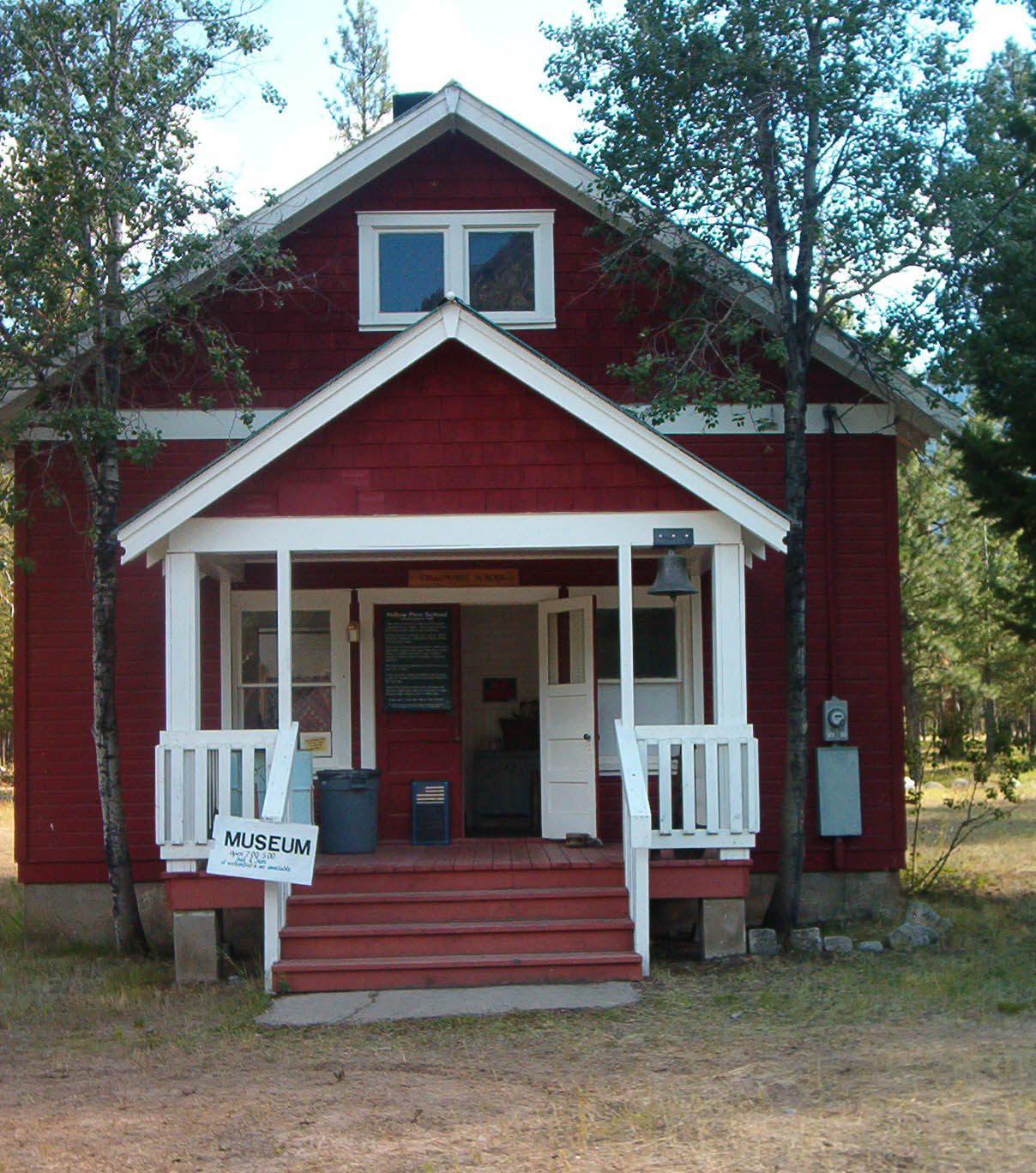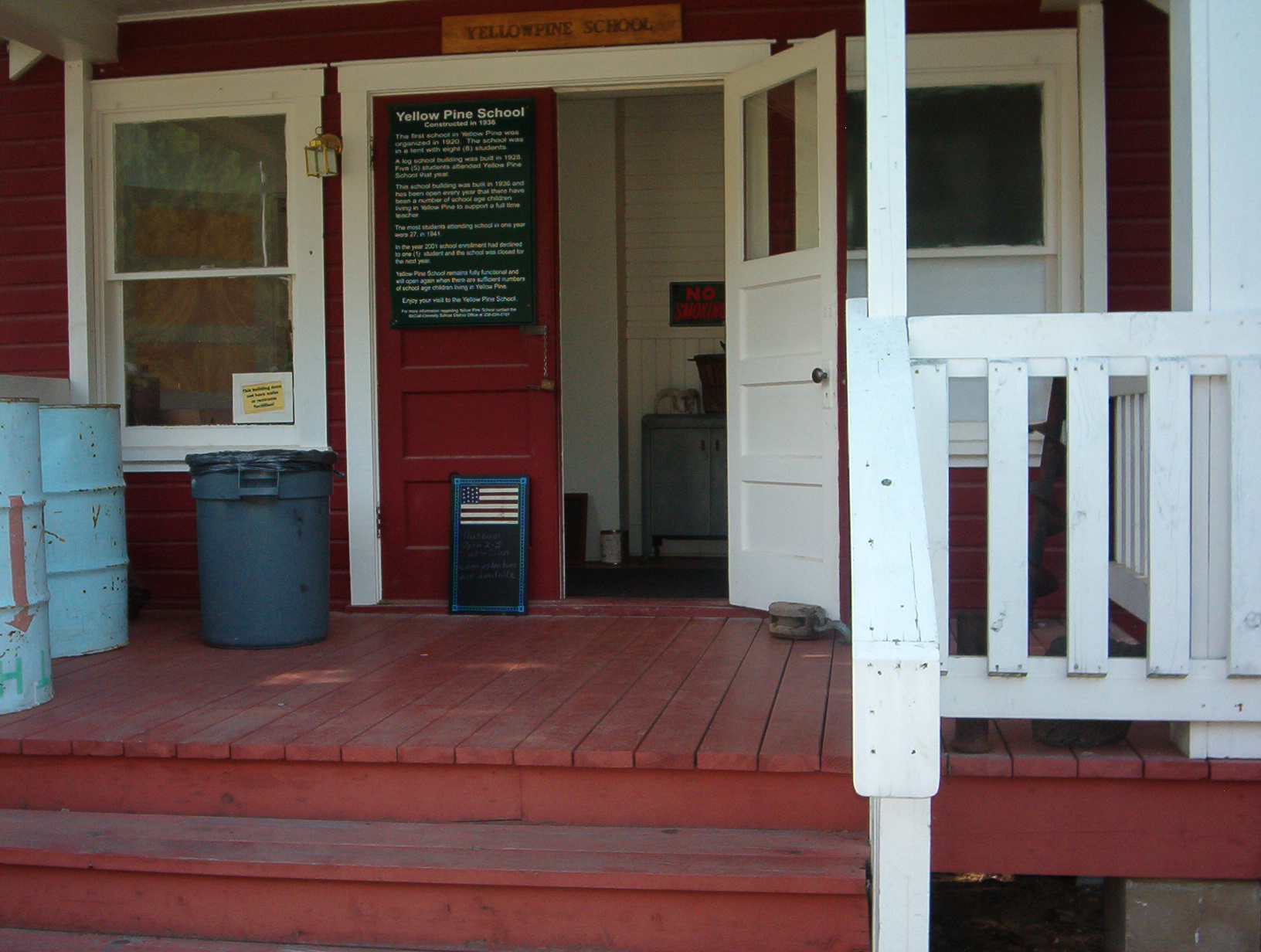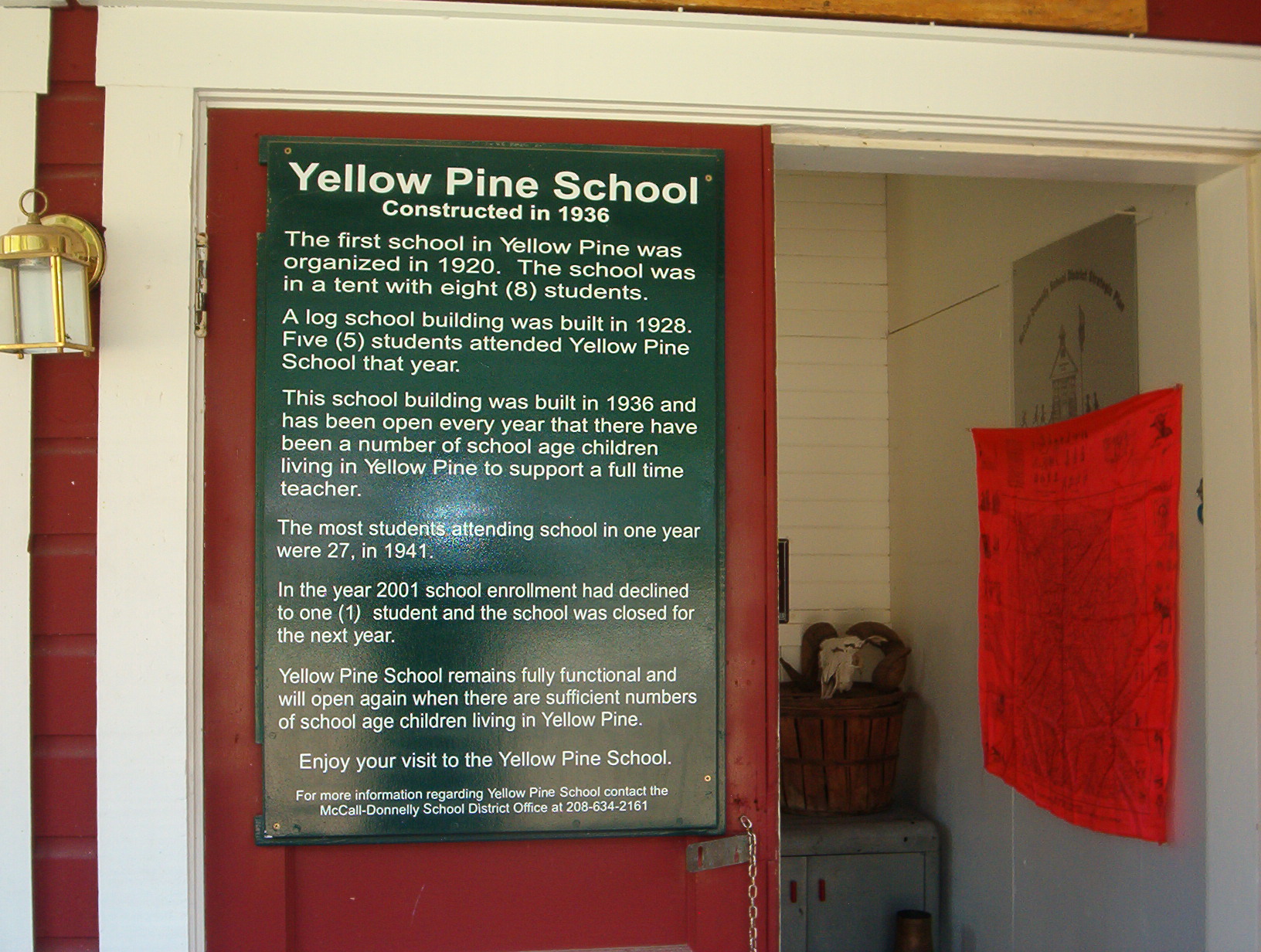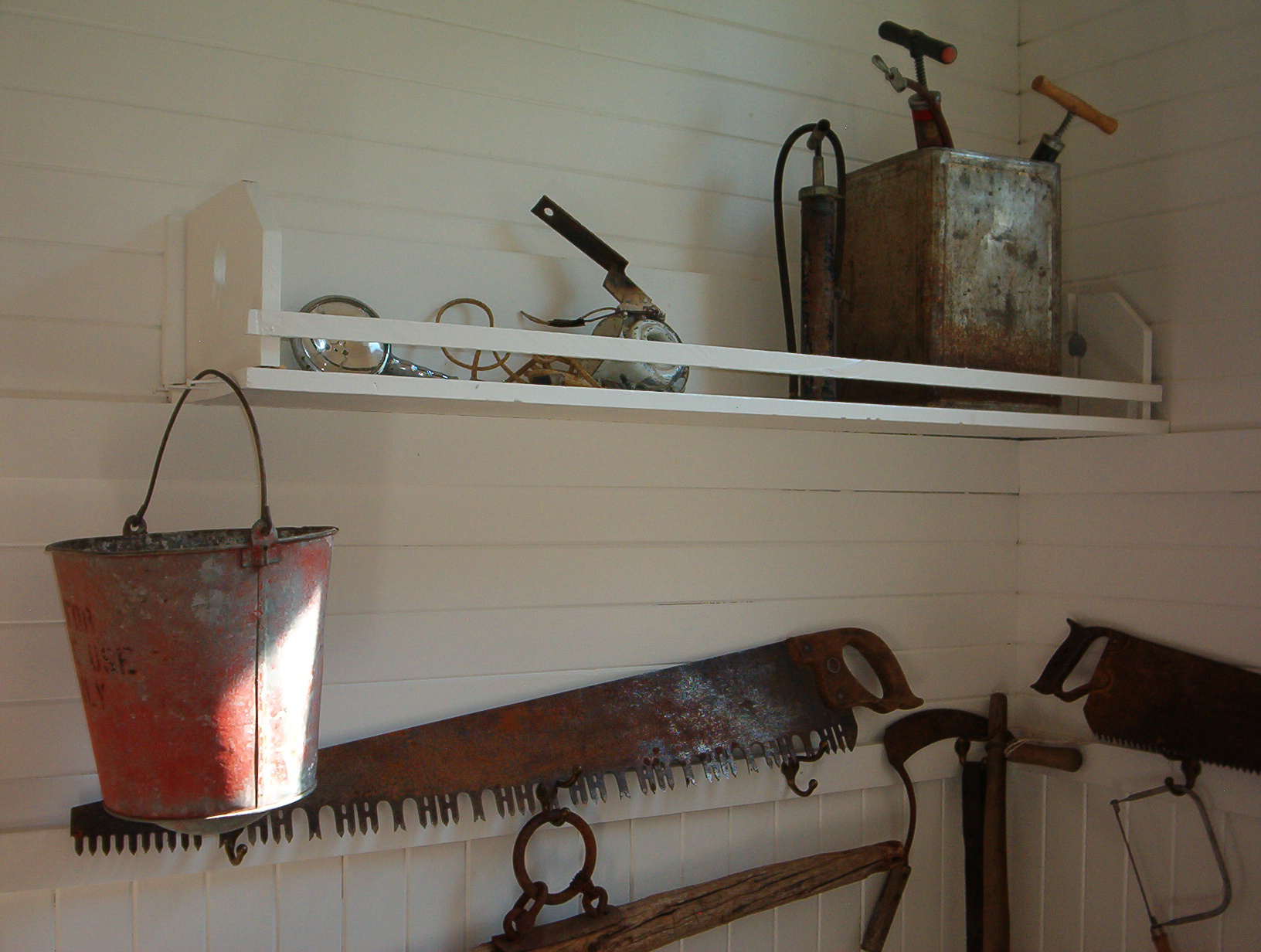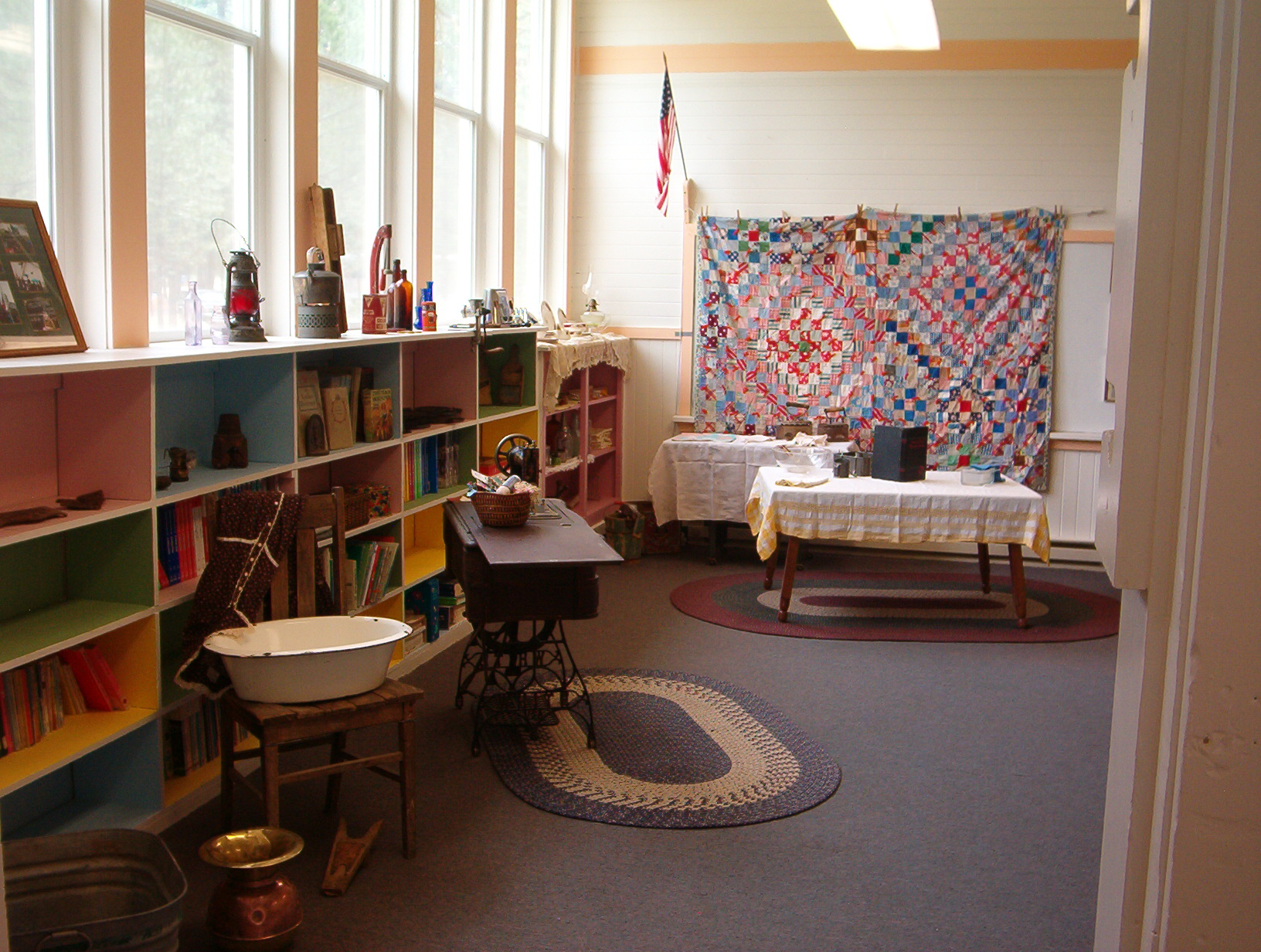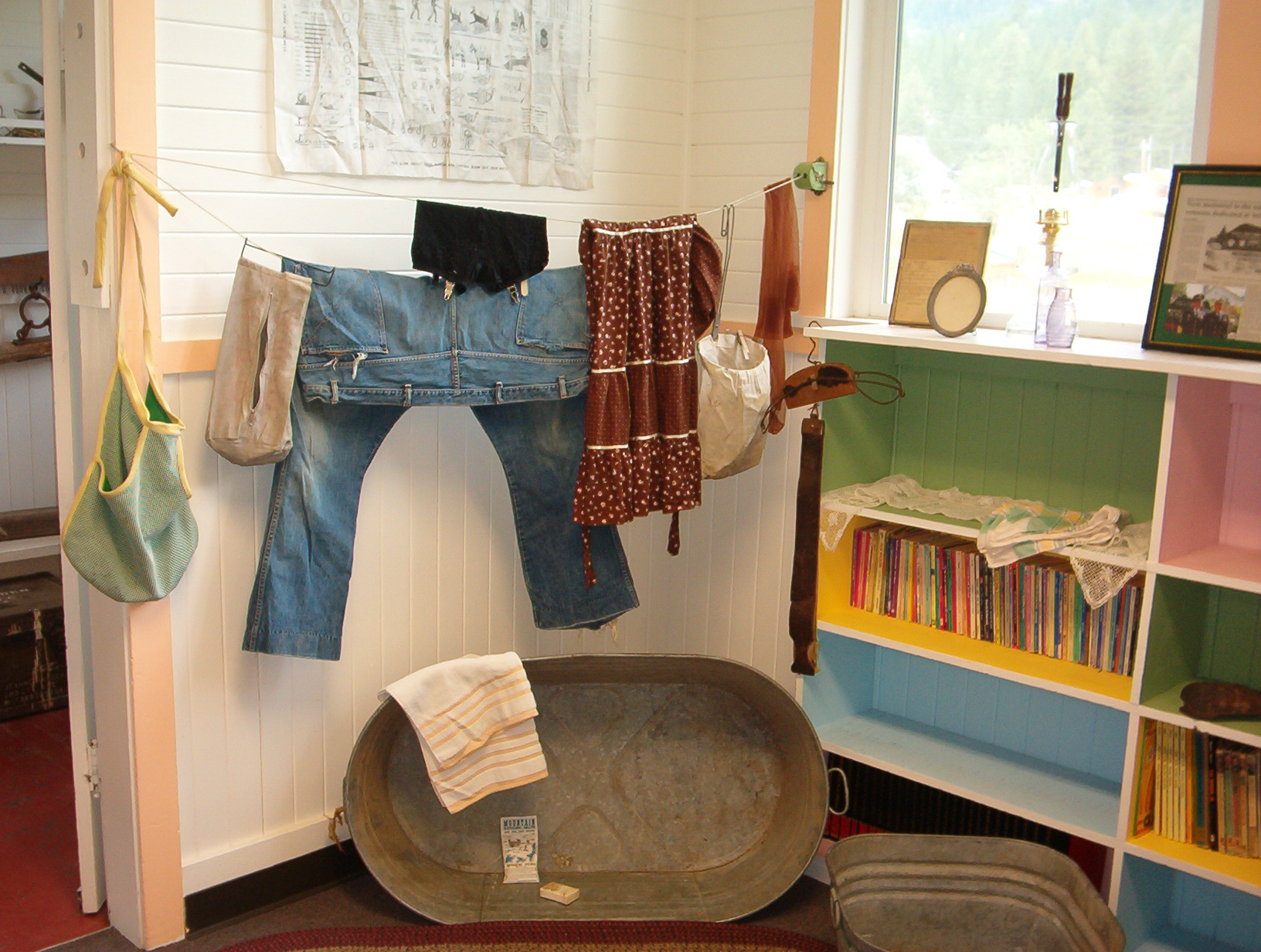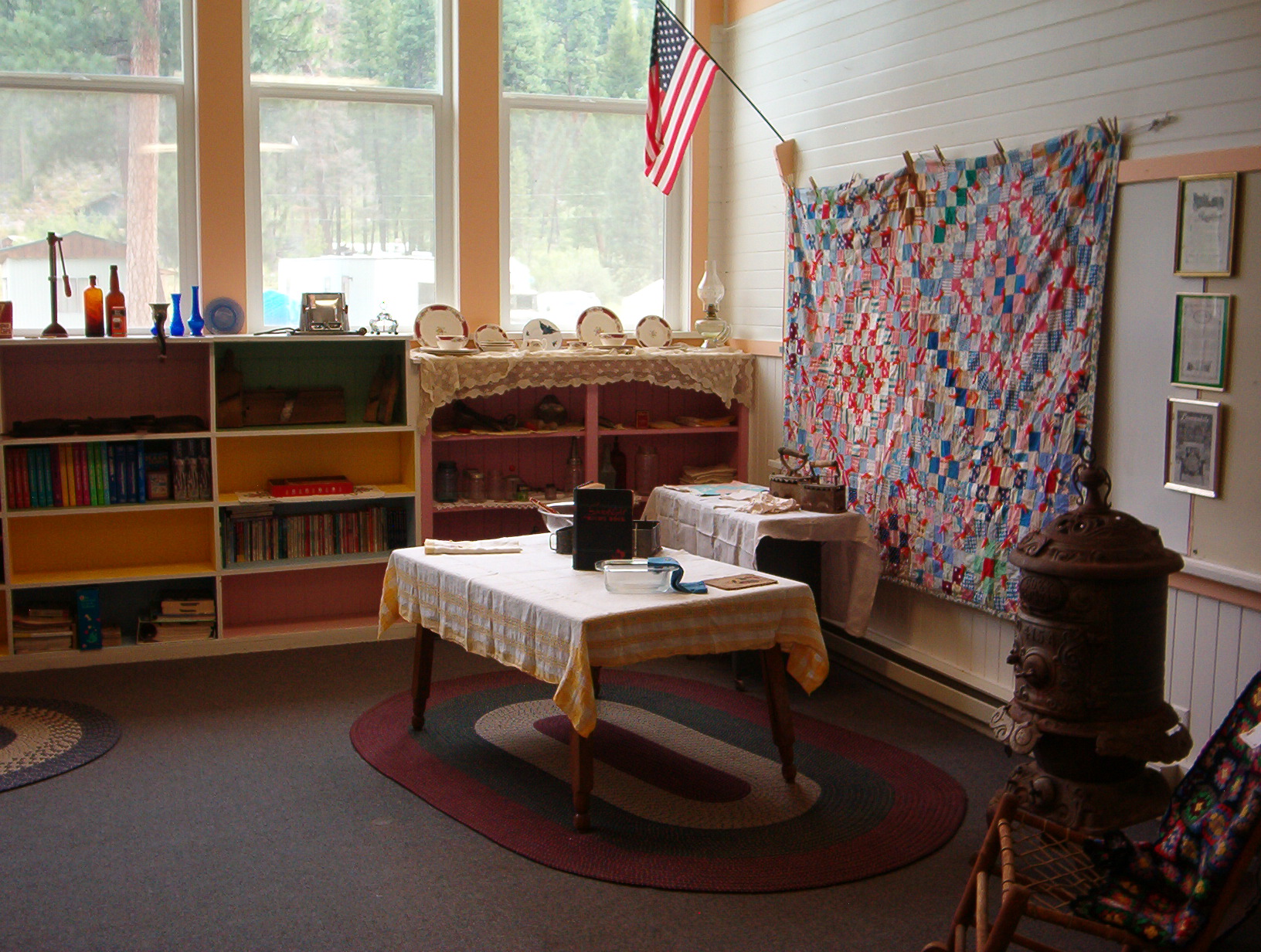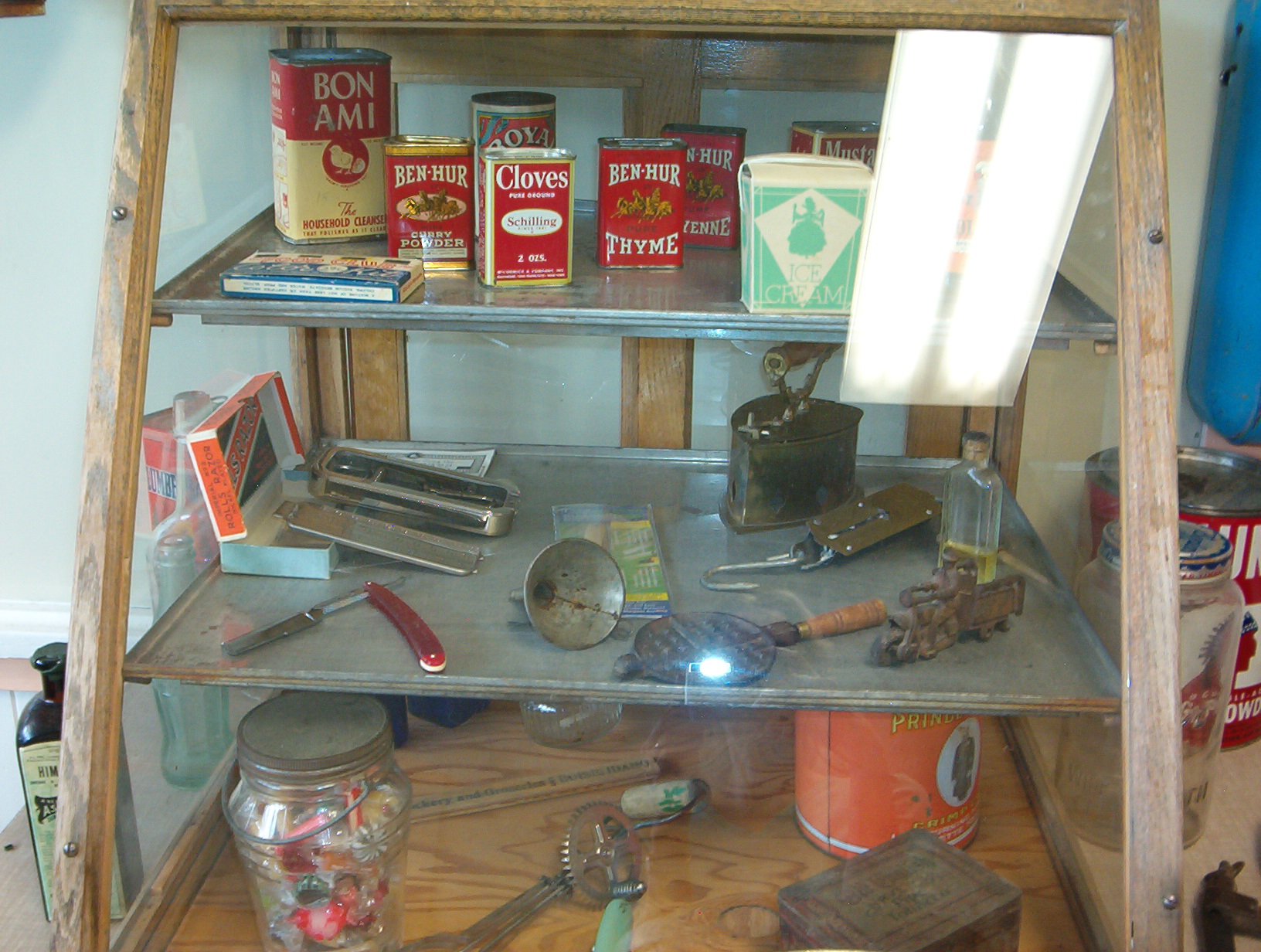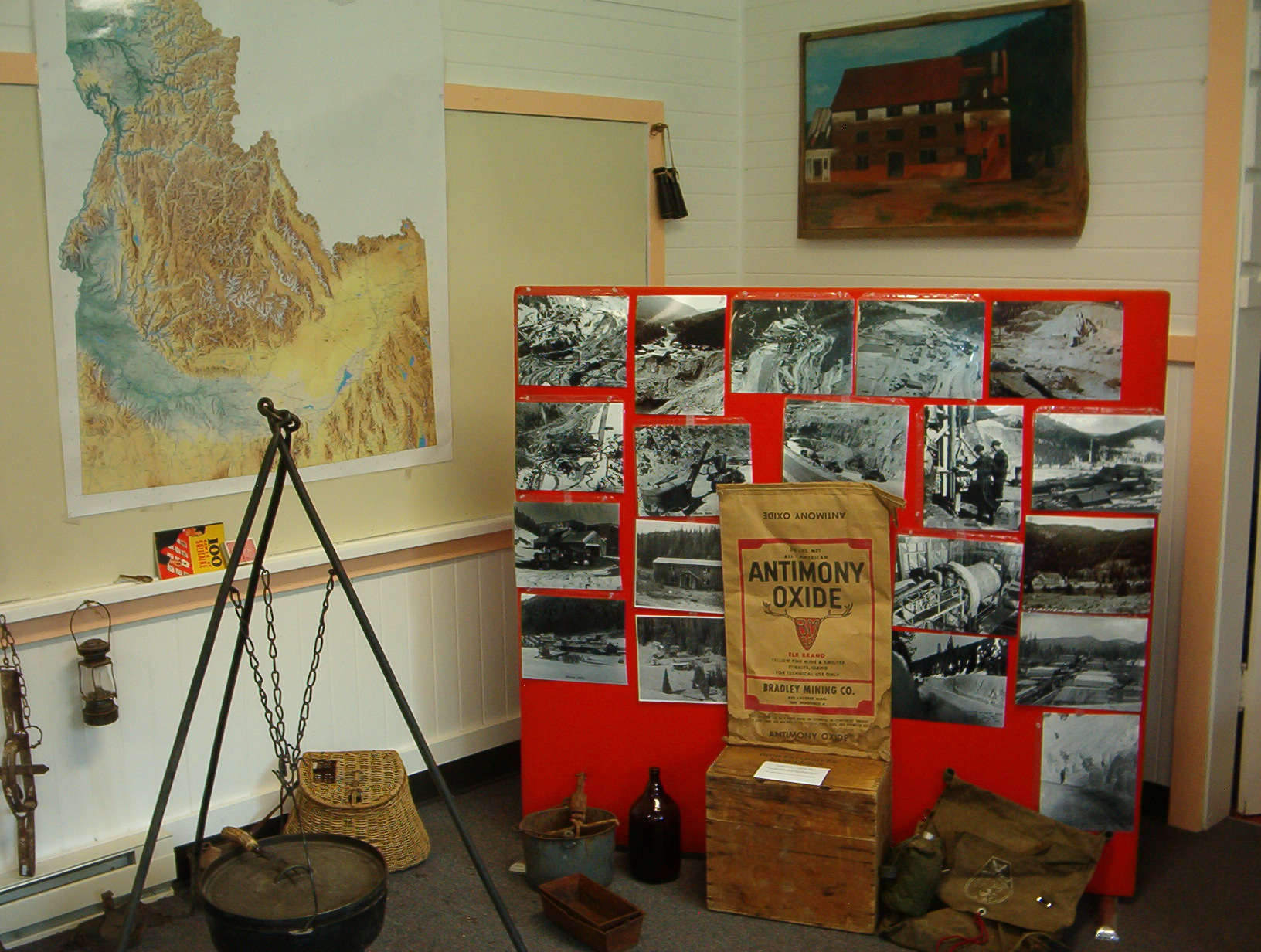VALLEY CO. POST OFFICE DATA
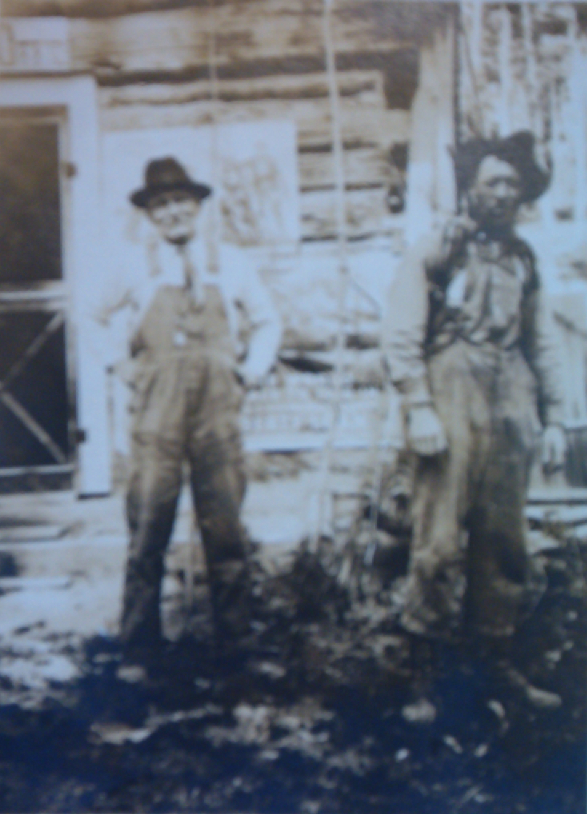 https://files.usgwarchives.net/id/valley/history/other/historyo24nms.txt
https://files.usgwarchives.net/id/valley/history/other/historyo24nms.txt:
This listing contains brief historical records of the opening and closing of USPOs, with names of postmasters. (See Yellow Pine, Big Creek, Edwardsburg, Knox, Warm Lake, Roosevelt, and Stibnite.)
(Left is a photo of Yellow Pine's first postmaster, Albert Behne, at the facility he built. To the right of him is his sometime mining partner Ray Call.)
CENSUS RECORDS
1910 Roosevelt Precinct (Yellow Pine and vicinity) US census names:
https://files.usgwarchives.net/id/valley/census/1910/roosevelt.txt:
This data extracted from the 1910 Valley County census is very interesting! – names, family connections, locations, all add to the picture of life in the backcountry. Includes the Willey Ranch family on the South Fork. (Remember that not all residents of the time were located by the census-taker.)
1920 Valley County US census data:
https://www.usgwarchives.net/id/valley/valley.htm:
Scroll down to the “Census” section – this too has separate pages, 10 of them, for segments of the alphabet (last names). This is the full census data, including occupation, place of birth of both counted individuals and their parents, and so forth. (This time the local precinct name has been changed to “Yellow Pine”.)
MISCELLANEOUS
History of the Boise National Forest 1905-1976:
https://www.fs.usda.gov/Internet/FSE_DOCUMENTS/fsbdev3_042206.pdf:
Early local history, Forest Service history and administration, resources information and management history, and a few photos.
Tales from the Last of the Big Creek Rangers: Payette National Forest, Idaho:
https://www.fs.usda.gov/Internet/FSE_DOCUMENTS/stelprdb5443278.pdf:
Entertaining memoir of Earl Dodds, ranger in the Big Creek area from 1957 to 1984 (minus winters, spent in McCall). Interesting how things changed for the district when the Wilderness designation hit. Quite a few photos; fun stories about Lafe Cox and lesser-known characters.
Marriages of Valley County:
https://www.usgwarchives.net/id/valley/valley.htm:
Scroll down to the “Marriages” section and see “Marriages of Valley County Idaho, 1889-1947. These are sorted by both brides and grooms (each in 7 name-alphabetized files), and many include their county of residence at the time of the marriage certificate issuance in Valley County.
Various pre-1921 Valley County pioneer data:
https://www.usgwarchives.net/id/valley/valley.htm:
Scroll down to the “History” section and see the “Pioneers 1870-1920 Indexes” area (note the “Pioneer Resources” page that explains where the information came from – sometimes necessary in understanding what the listing means). Much of this data appears in the other pages, above – but some not.
Brief history of Annie Foster Napier Edwards of Edwardsburg:
https://valley.idgenweb.org/per_hstry_edwards.html:
Snippets of information strung together from various sources limn the outline of a picture of one Southern woman who found herself in the remote backwoods of Idaho.
"Women in Wilderness" - BSU interviews, 1992:
https://www.facebook.com/387997257995768/videos/1423903461071804/?type=2&theater:
Interviews of 4 pioneering backcountry women, including Emma Cox (in her 70s at the time) of Johnson Creek's Cox Dude Ranch. Still photos + videos and audios from the interviews. (Sorry video has only been located on Facebook.)
History of Thunder Mountain/Roosevelt:
https://valley.idgenweb.org/history-T-Mtn.html:
An entertaining and well-researched article by Faith Turner, “The Ghosts Walk Under Water”, from Winter 1954 Scenic Idaho - about development of the Thunder Mountain mining property and gold rush, and the rise and fall of the town of Roosevelt.
Historical Newspapers at Library of Congress:
https://chroniclingamerica.loc.gov/:
A collection of digitized newspapers from 1789-1963, including several old ones from the West - with an excellently functioning search feature. Easy to find mention of people and places (and track the progress of some old-timers across the U.S. to Idaho).
Miscellaneous Historical Information About the Backcountry:
https://yellowpinetimes.wordpress.com/history/:
Various topical articles (usually with historic photos) gleaned by Yellow Pine resident Sue Neider.
MINING INFORMATION
https://www.youtube.com/watch?v=8oJVjWniLzk&feature=youtu.be:
This is a short video about silver as a medium of exchange, but it also shows modern metals mining and processing procedures (which are pretty similar to what went on in Stibnite during the mid-1900s).
https://www.idahogeology.org/PDF/Staff_Reports_(S)/2007/Staff_Report_07-2.pdf:
History of the Deadwood Mine near what is now Deadwood Reservoir.
https://video.idahoptv.org/video/2171941576:
Idaho Public Television’s Outdoor Idaho special “Gold Rush Days & Ghost Towns” (1-hour show online) – This is a superbly rendered view of several mining towns in Idaho (the nearest to Yellow Pine being Warren), as well as some general history of the state’s mining-related settlement beginning in the 1860s. [Interesting that Yellow Pine and its sister mining towns came about much later and, though quite remote and small, that Yellow Pine has yet continued to exist as a viable community all down the years. You'll note that Stibnite was a far different example from those ghost towns highlighted (of course, virtually nothing is left to film!) in that it was a true company town - one of its fascinations.]
